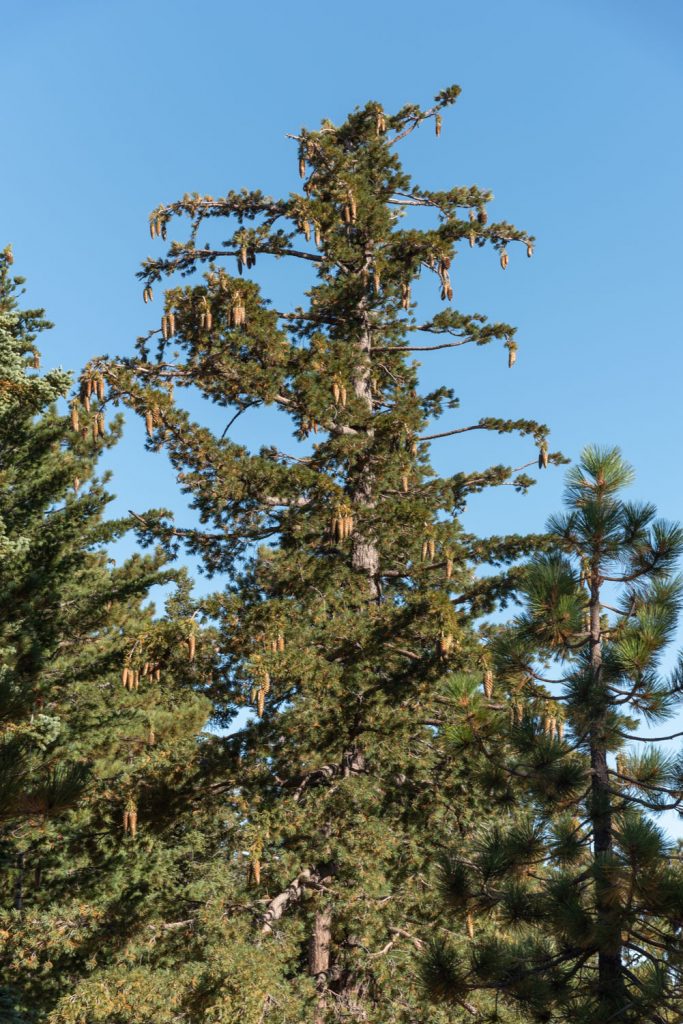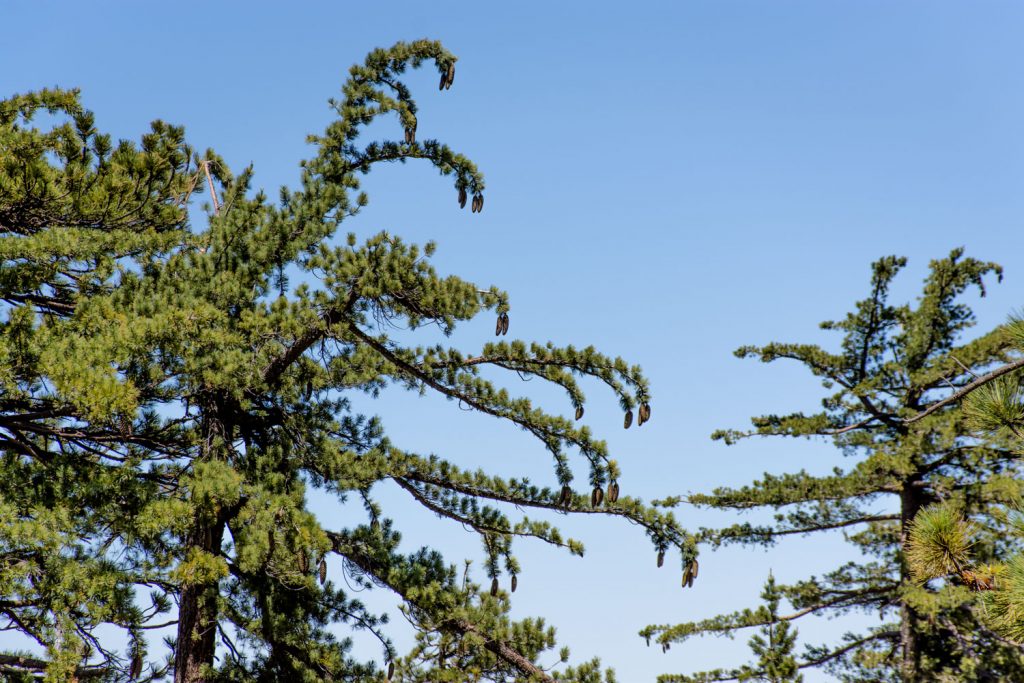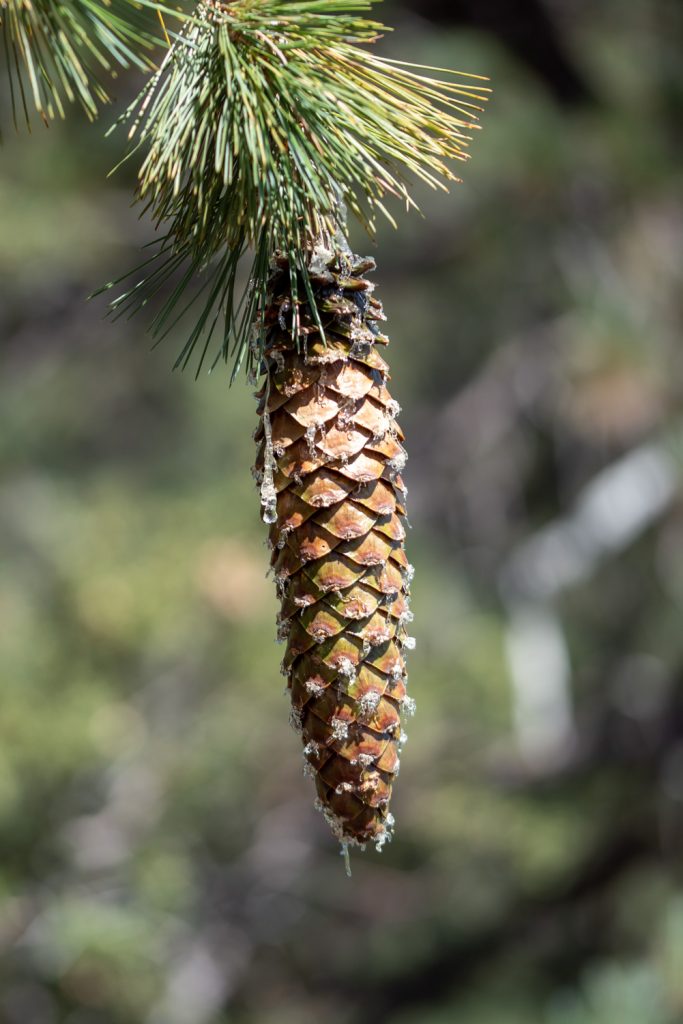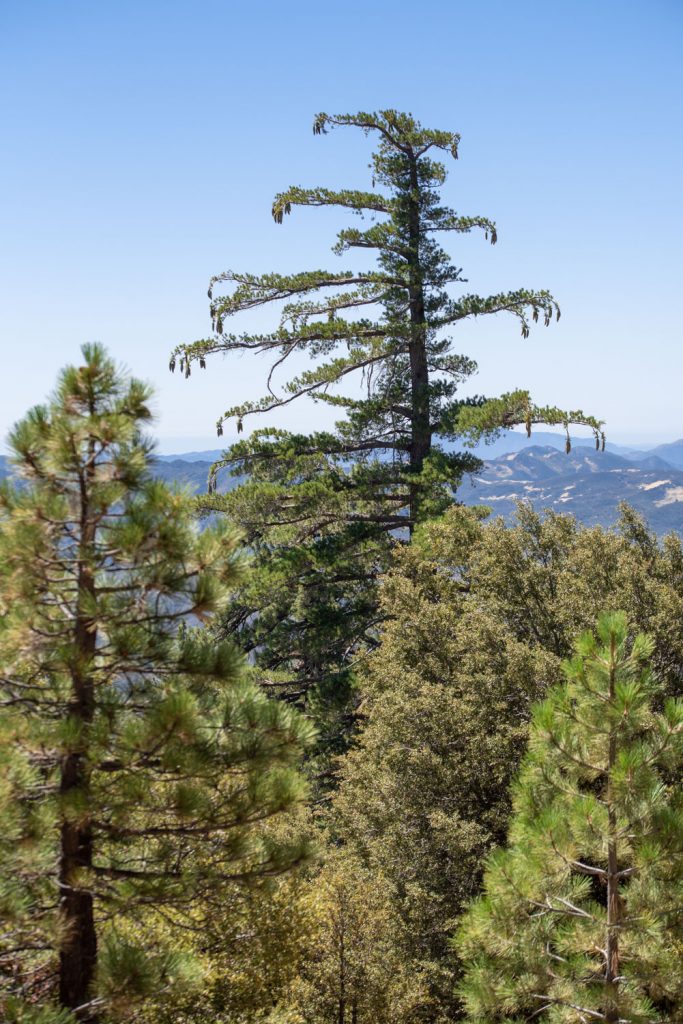
Pinus lambertiana
California has much to boast about when it comes to conifers. It has the greatest diversity of coniferous species in the United States, many of which are themselves standouts among their siblings and cousins across the world. The sugar pine is no different. Not only is it the world’s most massive species of pine, it also produces the world’s longest cones—and you can find it in several places in the Los Padres National Forest.
Description
Though hard to find in the modern age due to intensive logging, early reports of sugar pine heights ranged up to 275 feet. For comparison, the world’s tallest tree—a coast redwood in California—measures 380 feet tall. Even more impressive than the sugar pine’s height, however, is the diameter it’s able to obtain. Botanist David Douglas, who was the first to describe the species in Euro-American culture (Native Americans in the region had long been acquainted with the species by the time Douglas came upon it), found one tree that was 18 feet in diameter near the base. Such height and diameter are what give the species its distinction as the world’s largest pine, though it still falls short of some other conifers such as the giant sequoia and coast redwood.

When mature, the tree is relatively easy to spot even when standing among other pines like Jeffrey or ponderosa pine. It often towers above the other trees in a forest, with long and lanky branches extending horizontally from the trunk. In the summer, these branches are typically drooping with the weight of numerous large cones hanging from their tips.
The cones are something to behold as well. At their maximum, they are the longest cones of any pine species on Earth, reaching lengths of two feet. When still closed on the branches, they are usually covered in thick resin and appear like summer icicles in the canopy. Look for the long open cones that covering the forest floor wherever sugar pines are in abundance.

Unlike Jeffrey or ponderosa pines often growing alongside them, sugar pines have short needles in bundles of five rather than three. The needles are only about four inches long, which gives the branches of this species a less bushy appearance than other common pines. For comparison Jeffrey and ponderosa pines have needles that grow up to 10 inches long.
The sticky resin that can often be found around wounds on the tree contains a sugar called pinitol, which was used by various Native American groups as a laxative. This sweet resin is what gives rise to the sugar pine’s common name.
Distribution
Sugar pines can be found from Oregon to Baja California and from near the Pacific Coast east to the mountains near Reno, Nevada. The core of its range is in the northern Sierra Nevada, where it grows abundantly as part of large mixed-conifer forests.

Fortunately for those who love the mountains of southern California, sugar pines can also be found growing at high elevation in the Transverse and Peninsular Ranges. In the Los Padres National Forest, you can find this species growing on top of the peaks around Big Pine Mountain in Santa Barbara County, Pine Mountain Ridge and Alamo Mountain in Ventura County, and in a few spots within the San Emigdio Mountains in southern Kern County. There are also populations near Cone Peak and Junipero Serra Peak in the Ventana Wilderness. While the species does occur around Mt. Pinos—the national forest’s tallest mountain—it isn’t particularly abundant compared to places like Pine Mountain to the south.
Threats
In the 1800s, the burgeoning timber industry was a major source of destruction of sugar pines—especially in the Sierra Nevada. The species has uniquely straight-grained wood that was used to make shingles. Untold swaths of sugar pine forests were cut to be used for shingles, fence posts, and regular sawtimber used to build mining towns and cities developing across the state.

Fortunately, some old-growth sugar pine stands can still be found, especially in the Los Padres National Forest where logging was historically limited compared to other areas in California. Pine Mountain offers one of the best places in the region to witness this magnificent tree. However, a recent Forest Service proposal to log 400 acres of the ridgetop may result in the removal of many sugar pines growing there. ForestWatch is currently leading the charge in fighting this project.
Perhaps the other biggest threat to the species is its susceptibility to the introduced disease, white pine blister rust. While the disease has not spread to the species’ southern range, including the Los Padres National Forest, there is still concern about the ability of the invasive fungus that causes the disease to develop a new strain that can handle the drier conditions here.






